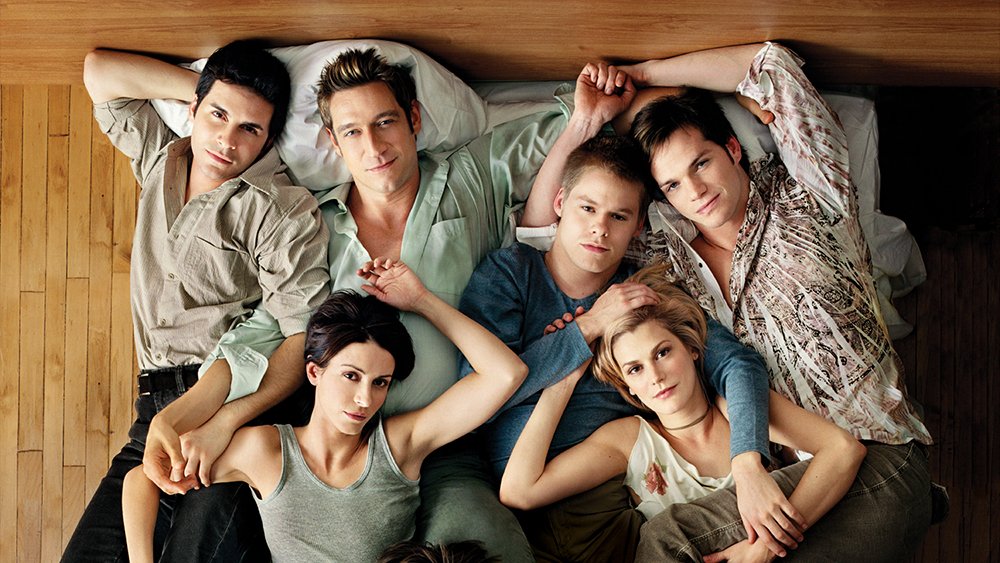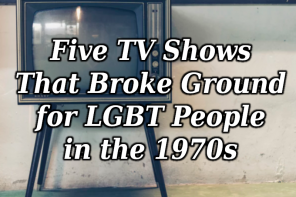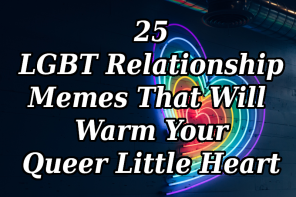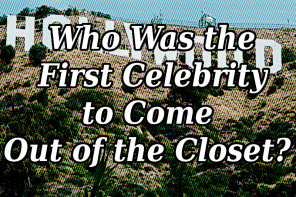Shows like Glee, Modern Family and OTHER have made LGBT characters more common on mainstream television but the introduction of a gay character can still make headlines. Just recently, the Walking Dead blew up social media websites when it introduced two male survivors in the post-zombie-apocalypse who also happened to be gay. Both critics and supporters took to social media to voice criticism and praise for the inclusion of the characters in the hit television show. Some people, who perhaps didn’t realize the characters were also a part of the original comic book series by Robert Kirkman and Tony Moore or that an out lesbian (Tara Chambler) had been introduced way back in Season 4, complained the men were included just to appease gay people or to be more politically correct. The fact is that LGBT roles have been around for decades but usually simply weren’t talked about seriously. Today, these characters are mainstream not because of some insidious ‘homosexual agenda’ but because the LGBT community is a part of the human community – television is simply beginning to recognize that fact.
In the Beginning…
When television was in its infancy it was monochrome in more ways than one. These small, static-filled boxes showed the world in terms of black and white and almost exclusively featured white, heterosexual and happily married families with some diversity coming from celebrities appearing on talk or game shows. But, as television grew and became more popular, executives realized the importance in featuring characters, storylines, environments and influences from a great cross-section of the public. Still, LGBT characters remained few and far between for much of television history.
The first time any sort of gay relationship was portrayed on television was on the made-for-TV movie That Certain Summer which aired in 1972. Two major stars at the time, Martin Sheen and Hal Holbrook, played a couple living in secret until Holbrook’s son discovers the truth. It was the first time homosexual relationships were shown in a sympathetic way and was well received publically and critically. The film and its actors were nominated for than a half dozen Emmy Awards (winning two of those) and also won a Golden Globe for Best Made for TV Movie that year, making it a watershed moment for LGBT characters and storylines on television.
A Growing Momentum
Once the entertainment world saw there was a real audience for LGBT characters and themes, networks and Hollywood began to creep out of the closet, albeit slowly. In 1975 the ABC network floated a short-lived series called Hot l Baltimore, which had been adapted from a popular play at the time. The show focused on an older gay couple living in a hotel. The series tackled a number of controversial issues and was seen as an even more risqué companion to the station’s popular All in the Family which also ran with a disclaimer regarding ‘mature content’. But the show never caught on and was cancelled after its initial 13 episode run.
While Hot l Baltimore didn’t survive, a few years later television was introduced to its first gay recurring character on a popular television show with the outing of Billy Crystal’s character, Jodie, on the primetime hit Soap. Crystal was a featured character in the show for its entire run from 1977 to 1981 and was the first openly gay character so heavily featured on a show up until that point. While the show itself was absurd and over the top, the inclusion of a gay man still tested people’s boundaries but, once again, showed the entertainment world there were people who could be inspired and emboldened by seeing a reflection of themselves in a popular show.
How an Epidemic Opened the Floodgates
While sexuality in general was still pretty taboo for mainstream entertainment, the AIDS epidemic of the 1980s made it impossible to ignore any longer. In 1985 a television move, An Early Frost, made headline with the tragic story of a son returning home to not only come out to his parents as being gay, but to also inform them he had the AIDS virus. This debuted shortly after Hollywood icon Rock Hudson came out and then died of AIDS shortly thereafter.
With AIDS as the official Hottest Topic in Town, several shows, television movies and Hollywood films quickly produced movies and shows that dealt not only with the baffling new epidemic, but also the challenges of coming to terms with an LGBT sexual identity. The 1986 television film My Two Loves, for example, focused not on the illness surging through the country, but on the dilemma of a woman who finds herself questioning her sexuality later in life, after her husband has passed away. It didn’t take long for networks to realize that the LGBT community was hungry to see shows and movies that not only dealt with the life threatening issues in their lives, but also the day to day dramas that make up anyone’s life.
In the 1990s, shows like LA Law, Picket Fences and My So Called Life all featured gay characters in one way or another. Each time, the appearance of the character made headlines and also provided LGBT viewers with a welcome change. As the 1990s went on, television became more and more comfortable with including LGBT characters, culminating in the epic lesbian wedding on the insanely popular sitcom Friends. A year later, Ellen DeGeneres went onto the Oprah Winfrey Show and came out publicly as a lesbian. She also came out through her character on her popular sitcom, Ellen, in an episode titled “The Puppy Episode”. When it aired it became the single most watched episode in the history of the show. Then, in 1998, the show Will & Grace debuted, which featured several gay characters and wound up being one of NBC’s most popular shows, running for 8 full seasons. At the same time, cable shows like Queer as Folk (2000) and The L Word (2004) began to appear and, while these shows weren’t as mainstream as primetime, their intense popularity helped to launch a new wave of LGBT centric characters and shows on the major networks.
LGBT Characters Today
With as far as LGBT rights have come, you’d think the inclusion of LGBT characters on television would be almost a non-event. But still, shows that feature recurring or one-off gay characters are still fodder for internet trolls and gossip. Still, the roster for LGBT characters on many of today’s hottest shows is nothing to sneeze at. From the footman you love to hate, Thomas Barrow, on PBS’ hit Downton Abbey to pretty much a full quarter of the Glee cast, LGBT characters are popping up more and more.
Best of all these LGBT characters are being given the chance to develop complex, multi-faceted characters that break out of many of the stereotypes many people have when it comes to gay men, transsexuals and lesbians. Omar Little from the hit show The Wire, for example, breaks just about every stereotype for gay men that most people can think of. He’s a gangster, ruthless to the extreme but with a streak of Robin Hood and a reputation so badass no one crosses him twice. On the HBO drama, Six Feet Under, David Fisher gives every appearance of a conservative, stoic funeral director but is actually married (a gay interracial marriage, no less) and eventually adopts two children with his husband. Even the family in Shameless, a hit in both the UK and the US which focuses on the antics of the world’s trashiest family, features a gay character – the patriarch’s ne’er do well son, Ian Gallagher. Hell, even The Simpsons boast a number of gay characters, among them Waylon Smithers and Marge’s sister Patty Bouvier.
With every inclusion of an LGBT character on a show or movie, television became not only more colorful and diverse, it became more personal. It became a chance for LGBT people to see a reflection of themselves – their lives, their loves, their challenges – in mainstream entertainment. Simply put, it proved that people of every walk of life had a place in the television landscape, a landscape which has always aimed to reflect its viewership. Today, that means LGBT characters can pop up anywhere – from daytime soap operas to primetime hits – because the LGBT community is everywhere.





